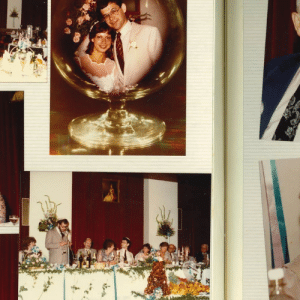Blog
March 7, 2023
From the hospital to the Underground: the story of Gusta Snyde
Born in 1915 in Tarnopol, Gusta Snyde had dreams of becoming a surgeon, but anti-Jewish laws prevented her from studying medicine. Instead, she studied nursing at a private Jewish Hospital in Krakow. When Jews were forced into the Krakow Ghetto in 1941, she continued her work as a nurse at the ghetto hospital.
In 1943, Gusta was forced to march to Plaszow concentration camp, leaving her sick patients behind. At Plaszow, Gusta used her skills as a nurse to save as many lives as possible. She regularly treated inmates who had been attacked by the camp’s infamous Nazi commander, Amon Göth. When travelling to another camp, Gusta risked her life to carry small notes from other inmates to give to their loved ones.
In 1944, Gusta was forced onto an overcrowded truck bound for Auschwitz-Birkenau. It took four days, and many would die on the journey of starvation and suffocation. Upon arriving at the death camp, Gusta recalled that she was beaten, stripped and forced to stand for 48 hours without food or water.

Gusta Snyde, Paris, March 1947. SJM Collection
Gusta’s hair was unevenly cut and she was issued ill-fitting clothing and wooden clogs. She was tattooed with the number “A27538” and was forced to take part in a medical experiment in which an unknown substance was injected into her upper arm.
In a 1996 interview, Gusta recalled how the sun had disappeared behind the consistent smoke in the sky.
“When I wake up now every morning and I can see the sun, I am the happiest person in the world,” she stated.
At Auschwitz, Gusta joined an all-female Underground resistance group. With this group, she assisted with a plan to blow up a gas chamber by collecting gunpowder.
In November 1944, Gusta was sent to participate in forced labour at a thread factory in Lichte Werden.
She was liberated there on 6 May 1945 by the Soviet Army.
After Liberation, Gusta returned to Krakow to discover that her entire family had been murdered during the Holocaust. Despite hearing that her youngest sister had escaped, she was unable to find her.
Gusta spent the next four years rehabilitating and caring for 100 Jewish orphans. She aided with establishing a home for them in Rabka. Following a string of violent acts towards the orphanage by Polish fascists, Gusta used a food truck to sneak the children to Zakopane.
Eventually, the children moved to a house in Paris. The children were transported to Israel in 1949. She remained in contact with some of the children and staff of the orphanage throughout her life.
In 1949, Gusta left Europe for Melbourne, Australia, where she would make a new life for herself.

Gusta and her nurse friend, Marie in 2005. Brisbane. SJM Collection.






What’s On Newsletter
Keep up to date on all Museum events and exhibitions.